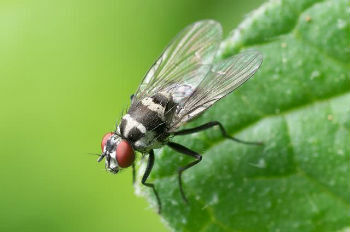insects are invertebrate animals arthropods, belonging to the Phylum Arthropod and Insecta Class.
They represent the group with the greater diversityamong all animals on the planet.
There are about 950,000 known species, of which more than 109,000 are found in Brazil.
Examples of insects are: beetles, butterflies, bed bugs, mosquitoes, grasshoppers, among many others.
Main features
Learn about the main characteristics of insects:
body structure

Insects have bodies divided into:
- head;
- chest and abdomen;
- a pair of antennas;
- three pairs of legs;
- one or two pairs of wings.
Circulatory system
The circulatory system of insects is opened.
The colorless blood fluid, called hemolymph, is pumped from a dorsal heart passing from vessels to body cavities, called hemocells.
Some insects have accessory hearts to help pump the hemolymph into the wings. Hemolymph may or may not contain respiratory pigments such as hemoglobin or hemocyanin.
Digestive system
The digestive system of insects is complete. The digestive tube presents
accessory glands (salivary gland, gastric cecum) and presence ofjaws and mouthparts to help handle and grind food.THE digestion is extracellular, through enzymes secreted by the gastric cecum. Nutrients are absorbed by the cells of the intestine and distributed by the hemolymph to the rest of the body.
Respiratory system
insects present breathing tracheal. Air enters the body through spiracles, present on the body surface, and through the tracheas, which are branched tubes, reaching the cells of the body.
Nervous and excretory system
The insect's nervous system is composed of brain ganglia, which consists of the union of several nerve ganglia, in addition to several ventral nerves.
Excreta are eliminated through the Malpighian Tubules. They are responsible for removing excretions from the hemolymph and releasing them into the intestinal cavity, being eliminated together with the remains of digestion through the anus.
Reproduction and development
Insect reproduction is sexual, the species are dioic, that is, with the two sexes separated.
The male releases sperm into the female's body, which are stored in the sperm library and then fertilized, so fertilization is internal. However, in some species it can also be external.
Know more:
- sexual reproduction
- Internal and External Fertilization
The development of animals can be direct (ametaboles) or indirect (Metabols).
In ametabolous insects, when the egg hatches an animal similar to the adult. While the metaboles go through metamorphosis to reach adulthood.
According to metamorphosis, there are two types of insects:
- holometaboles: animals that show complete metamorphosis.
- Hemimetabolus: animals that show incomplete metamorphosis.
Holometabolites come out of the egg in the form of larvae, which are very active and voracious. After that, they go through the pupa stage, also called chrysalis or cocoon, when they become immobile and finally reach the adult stage.

Hemimetabola are born similar to adults, in the form of nymphs and gradually acquire all the characteristics.

Therefore, there are three forms of development: direct, indirect with incomplete metamorphosis and indirect with complete metamorphosis.
Learn more aboutanimal metamorphosis.
Classification
The class of insects can be subdivided into several orders.
Order names end with term pther, derived from the Greek, and is related to the type of wings.
Being a very diverse group, insects are very different. They vary in the types of wings, but they have in common the general characteristics that are: head, chest and abdomen, a pair of antennae and 3 pairs of legs. Not all insects have wings.
Coleoptera order: beetles and ladybugs

The Order Coleoptera is the most numerous, with about 400,000 known species.
Its representatives have 2 pairs of wings, the outer ones being rigid and the inner ones thin and membranous.
Order Hymenoptera: bees, wasps, termites and ants

The Order Hymenoptera has about 200,000 species, with 2 pairs of thin, membranous wings, in addition to some that do not have wings.
Some representatives of this group live in societies with a high level of social organization, such as bees and termites.
Read too:
- Ants
- bees
- social insects
Lepidoptera order: butterflies and moths

The Order Lepidoptera has more than 100,000 species, with 2 pairs of membranous wings and a specialized mouth system to suck nectar from flowers.
Diptera order: flies and mosquitoes

The Order Diptera contains about 95,000 species, which have a pair of thin wings.
Hemyptera Order: Bedbugs

The Order Hemyptera has about 50,000 species, most with 2 pairs of wings, the anterior pair being rigid at the base and membranous at the end.
They are usually parasitic animals on other animals and plants.
Homoptera order: cicadas and aphids

The Order Homoptera contains about 25,000 species, most with two pairs of wings and some without wings.
Orthoptera order: grasshoppers and crickets

The Order Orthoptera has more than 11,000 species, most with two pairs of wings.
Odonata Order: Dragonflies

The Order Odonata has about 5 thousand species. They have large eyes, 2 pairs of thin, transparent wings.
Its representatives are predators of other animals.
Thysanura Order: Book Moths

The Order Thysanura has about 500 wingless species, with a pair of long antennae and three long tails.
Learn more, read also:
- Invertebrate Animals
- arthropods
- snake lice


